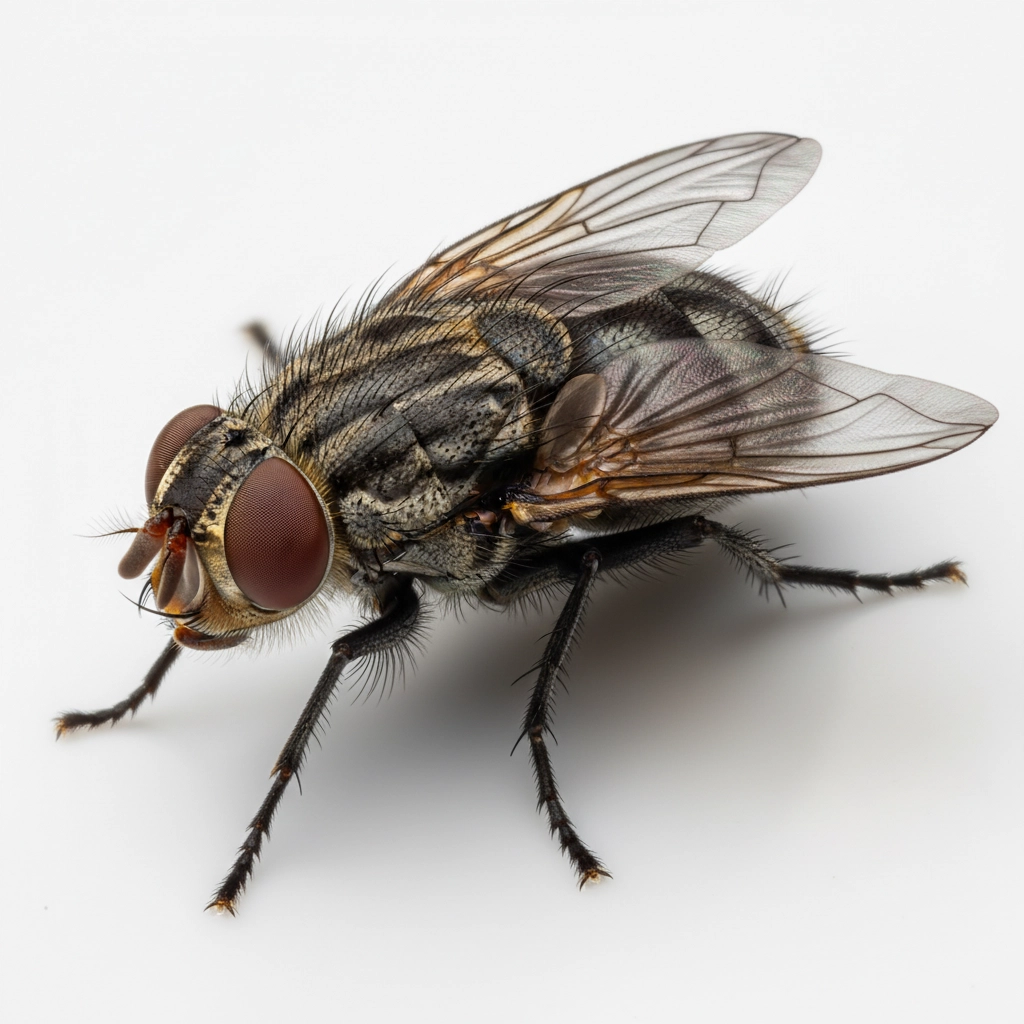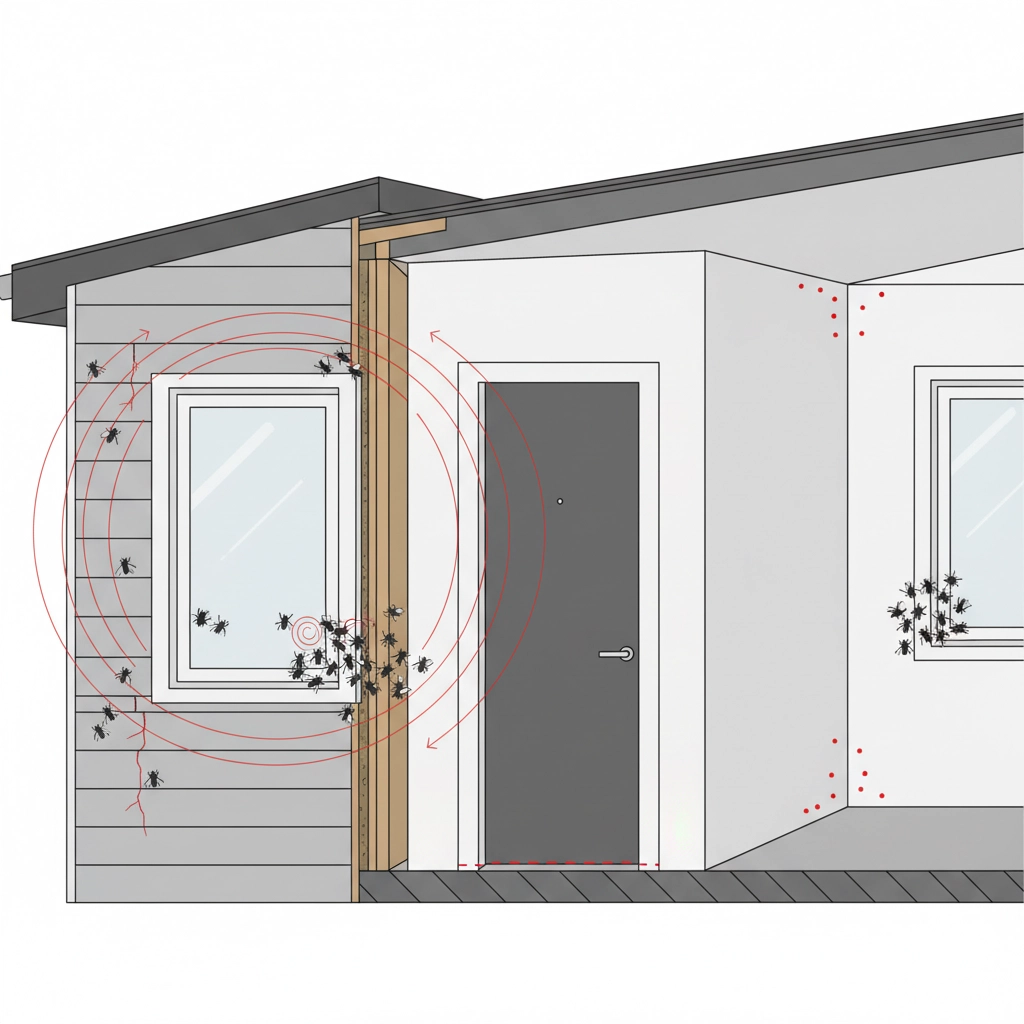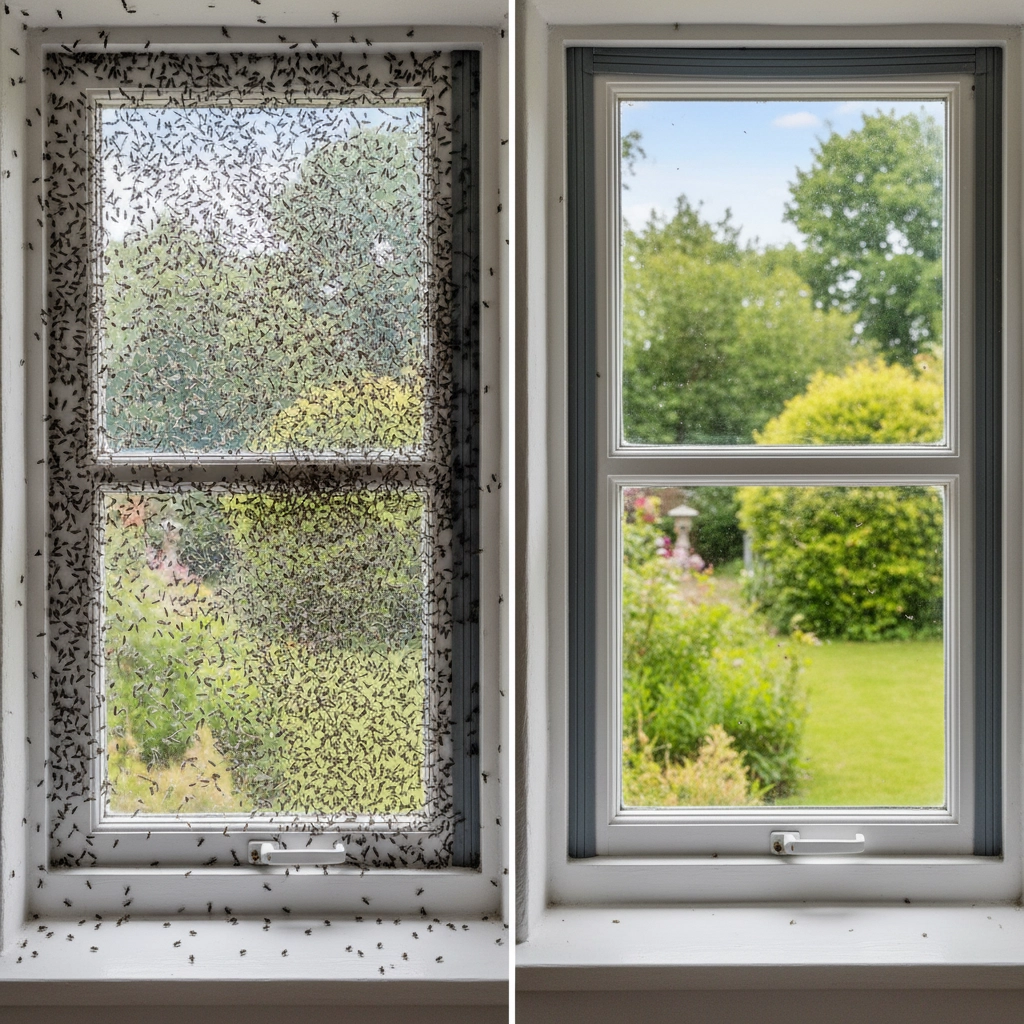Cluster Flies in Haliburton County: Identification, Risks, Prevention, and Control
- Targeted Wildlife and Pest Solutions

- Sep 26
- 5 min read
If you've noticed large groups of slow-moving flies gathering around your windows during fall and winter months in Haliburton County, you're likely dealing with cluster flies. These persistent pests create one of the most frustrating indoor infestations for homeowners and cottage owners throughout our region, particularly as temperatures drop and they seek warm places to hibernate.
Unlike common house flies that you might swat in your kitchen, cluster flies have a completely different agenda. They're not interested in your food: they want your home as their winter retreat. Understanding how to identify, prevent, and control these insects can save you months of frustration and protect your property from ongoing infestations.
What Are Cluster Flies?
Cluster flies are outdoor insects that invade homes specifically for overwintering. During their larval stage, they actually live as parasites inside earthworms in your yard. When they mature into adults in late summer and fall, they begin searching for protected places to hibernate: and your warm, bright home looks perfect to them.
The key difference between cluster flies and regular house flies is their behavior and lifecycle. While house flies breed indoors and live short lives, cluster flies can survive for months in your walls, attics, and window frames, emerging on warm winter days before settling back into hibernation.
How to Identify Cluster Flies

Recognizing cluster flies early can help you take swift action before a small problem becomes a major infestation.
Physical Characteristics:
Slightly larger than common house flies
Dull gray body with distinctive black markings on the abdomen, creating a checkered pattern
Golden-yellow hairs on the thorax that give them a subtle golden sheen
Move more slowly than typical house flies
Make a louder buzzing sound when flying
Behavioral Signs: The most obvious clue is their name: they cluster together in large groups. You'll typically find them:
Congregating around windows, especially on the south and west sides of your home
Gathering in attics, unused rooms, and wall voids
Becoming active on warm, sunny winter days
Flying toward light sources when disturbed
Appearing in the hundreds or even thousands during peak season
When They Appear: In Haliburton County, cluster flies typically begin appearing in September and October as temperatures start dropping. You'll see the heaviest infestations during the first warm spells of late winter and early spring when they wake up from hibernation and try to find their way back outside.
Risks and Problems They Cause
While cluster flies don't pose significant health risks like some other pests, they create several problems for Haliburton County property owners.
Nuisance Factor: The sheer volume of cluster flies can be overwhelming. Imagine opening your cottage after a long winter to find thousands of dead and dying flies covering your windowsills, floors, and surfaces. This scenario plays out regularly for property owners throughout our region.
Property Damage:
Staining: Cluster flies leave excrement stains on curtains, blinds, and window frames
Odor: When crushed, they release an unpleasant, sickly-sweet smell that can linger
Surface damage: Their body fluids can stain walls, fabrics, and other surfaces
Secondary Pest Problems: Dead cluster flies can attract carpet beetles and other insects that feed on their carcasses. This means your cluster fly problem can evolve into multiple pest issues if not addressed properly.
Structural Concerns: Large numbers of cluster flies can indicate potential entry points in your home's exterior that may also allow other pests or moisture problems to develop.
Prevention Strategies

The most effective approach to cluster fly control is prevention. Since these pests return to the same locations year after year, taking action before they arrive can save you significant hassle.
Seal Entry Points: Before September, conduct a thorough inspection of your home's exterior:
Check all window and door screens for holes or loose fitting
Apply fresh caulking around window frames, door frames, and trim
Install weather stripping where needed
Examine and seal cracks in siding, foundation, and roofline
Cover soffit vents with fine mesh screening
Focus on Problem Areas: Pay special attention to the south and west-facing sides of your property, as cluster flies prefer these warmer, sunnier exposures. These areas typically need the most comprehensive sealing efforts.
Timing Is Critical: Don't wait until you see cluster flies to start prevention work. Once they're inside for the winter, sealing entry points will only trap them inside with no way out. Complete all exterior sealing by early September at the latest.
Professional Barrier Treatments: Consider having a pest control professional apply residual sprays to your home's exterior before cluster fly season. These treatments create an invisible barrier that can significantly reduce the number of flies that successfully enter your home.
Control Methods When Prevention Isn't Enough

If cluster flies have already established themselves in your Haliburton County home or cottage, several control options can help manage the situation.
Physical Removal:
Vacuuming: The most effective immediate solution. Use a shop vacuum to remove large numbers quickly. Dispose of the vacuum bag immediately to prevent odors
Manual removal: Suitable for smaller numbers, though crushing them releases unpleasant odors
Live capture: You can capture and release them outdoors on warm days, though this is time-consuming for large infestations
Trapping Systems: Specialized cluster fly traps work well in problem windows. These devices use light attraction combined with trapping mechanisms to capture flies as they try to escape. Position traps in south and west-facing windows for best results.
Chemical Control: For severe infestations, approved insecticide products can be applied to:
Window and door frames
Baseboards in affected rooms
Attic spaces where flies congregate
Other hiding spots like closets and unused rooms
Always choose products with Pest Control Products (PCP) numbers and follow label directions carefully.
Professional Treatment: Severe or recurring cluster fly problems often require professional intervention. Pest control experts have access to more effective treatments and can identify and seal entry points you might miss.
What NOT to Do
Don't eliminate earthworms from your property. While cluster flies use earthworms as hosts during their larval stage, earthworms provide essential soil aeration and fertility benefits that far outweigh any pest control advantage.
Don't ignore the problem hoping it will go away. Cluster flies return to the same overwintering sites year after year, often in increasing numbers.
Don't seal your home during winter when flies are inside. This traps them with no escape route and can worsen the problem.
Special Considerations for Cottage Owners

Cottage owners in Haliburton County face unique cluster fly challenges. Properties that sit empty for months provide ideal undisturbed hibernation sites, and returning in spring to find thousands of dead flies is a common and unpleasant experience.
Pre-Season Preparation: Before closing your cottage for winter, complete all sealing work and consider having a professional apply barrier treatments. The investment in prevention far outweighs the cleanup hassle later.
Spring Opening Protocol: When reopening your cottage:
Ventilate thoroughly before entering
Vacuum up dead flies immediately
Check for live flies in warm areas
Clean and disinfect affected surfaces
Plan prevention measures for the following season
Long-Term Management
Successful cluster fly management requires consistency. These pests have excellent site memory and will return to successful overwintering locations year after year. Property owners who implement comprehensive prevention programs typically see dramatic reductions in infestations over time.
Consider keeping a maintenance log of sealing work, treatment dates, and problem areas. This information helps identify patterns and ensures you stay ahead of seasonal infestations.
Getting Professional Help
If you're dealing with recurring cluster fly problems or large infestations that overwhelm DIY approaches, professional pest control services can provide comprehensive solutions tailored to your specific property and situation.
Professional treatments offer several advantages:
Access to more effective products and application methods
Thorough property inspection to identify all potential entry points
Ongoing monitoring and seasonal treatment programs
Integrated approach combining exclusion, treatment, and follow-up services
Don't let cluster flies take over your home or cottage. With proper identification, prevention, and control strategies, you can protect your Haliburton County property from these persistent pests and enjoy a more comfortable living environment year-round.
Comments